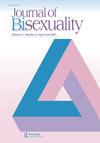Minorities within Minorities: Mental Health Outcomes within Sexual Minority Youth
IF 1.9
Q2 SOCIAL SCIENCES, INTERDISCIPLINARY
引用次数: 3
Abstract
ABSTRACT The mental health disparities for lesbian, gay, bisexual, and queer (LGBQ) compared to heterosexual youth are well established. However, evidence indicates there may be diversity in risk for mental health outcomes within sexual minority youth. This study examined mental health outcomes in 1,933 young people (aged 16 − 25 years) who used the online mental health platform ReachOut. We explored mental health outcomes (mental health service use and hospitalization, depression, anxiety, and stress), and risk for suicide among heterosexual, gay/lesbian, bisexual, queer+, and questioning young people. Compared to their heterosexual peers, bisexual, queer+, and questioning young people had significantly higher levels of depression, anxiety, and risk for suicide. Bisexual and queer+ young people also had significantly higher levels of stress compared to heterosexual youth. Bisexual and young people questioning their sexuality were significantly more likely to have a previous mental health hospitalization. Gay/lesbian youth did not significantly differ from heterosexuals on depression, anxiety, stress, or previous hospitalization, but did for risk of suicide. These findings underscore the importance of measuring, reporting, and addressing the distinct mental health experiences of sexual minority youth.少数群体中的少数群体:性少数群体青年的心理健康结果
摘要女同性恋、男同性恋、双性恋和酷儿(LGBQ)与异性恋青年的心理健康差异已得到充分证实。然而,有证据表明,性少数群体青年的心理健康结果风险可能存在多样性。这项研究调查了1933名16岁的年轻人的心理健康状况 − 25 年)使用在线心理健康平台ReachOut。我们探讨了异性恋、男同性恋、双性恋、酷儿+和质疑年轻人的心理健康结果(心理健康服务的使用和住院、抑郁、焦虑和压力)以及自杀风险。与异性恋同龄人相比,双性恋、酷儿+和爱质疑的年轻人的抑郁、焦虑和自杀风险明显更高。与异性恋青年相比,双性恋和酷儿+青年的压力水平也明显更高。双性恋者和质疑自己性取向的年轻人之前更可能有心理健康住院治疗。男同性恋青年在抑郁、焦虑、压力或之前住院治疗方面与异性恋者没有显著差异,但自杀风险确实存在差异。这些发现强调了衡量、报告和解决性少数群体青年独特心理健康经历的重要性。
本文章由计算机程序翻译,如有差异,请以英文原文为准。
求助全文
约1分钟内获得全文
求助全文
来源期刊

Journal of Bisexuality
SOCIAL SCIENCES, INTERDISCIPLINARY-
CiteScore
2.60
自引率
17.60%
发文量
32
期刊介绍:
The Washington Quarterly (TWQ) is a journal of global affairs that analyzes strategic security challenges, changes, and their public policy implications. TWQ is published out of one of the world"s preeminent international policy institutions, the Center for Strategic and International Studies (CSIS), and addresses topics such as: •The U.S. role in the world •Emerging great powers: Europe, China, Russia, India, and Japan •Regional issues and flashpoints, particularly in the Middle East and Asia •Weapons of mass destruction proliferation and missile defenses •Global perspectives to reduce terrorism
 求助内容:
求助内容: 应助结果提醒方式:
应助结果提醒方式:


